|
It happens every October. Sometimes you see Tweetie Bird, or Darth Vader’s head. There may also be a vacationing penguin, complete with shades and camera. The sky fills with brightly-colored exclamation points morning and evening for a week in early October at Albuquerque’s International Balloon Fiesta. 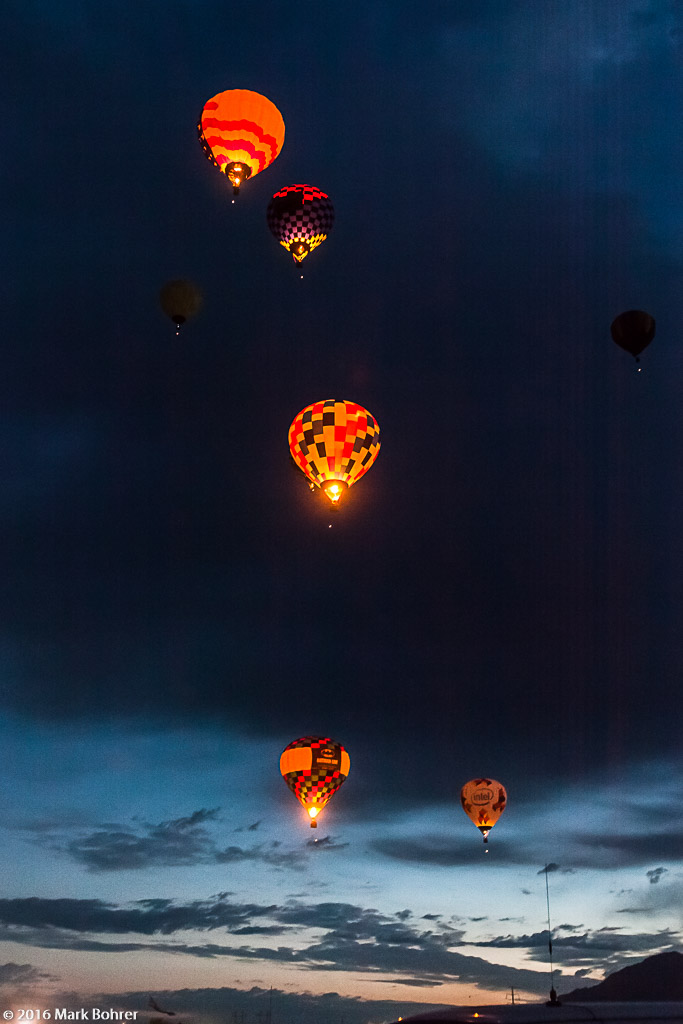 Exclamation points in the sky – morning mass ascension, Albuquerque International Balloon Fiesta Get Up Early Arrive early – 4:30 am local time isn’t too soon – on a day with low winds and no rain in the forecast. Winds must be below 10 knots or 11.5 MPH for balloons to launch. Even if they don’t fly, there’s plenty to see in the morning. 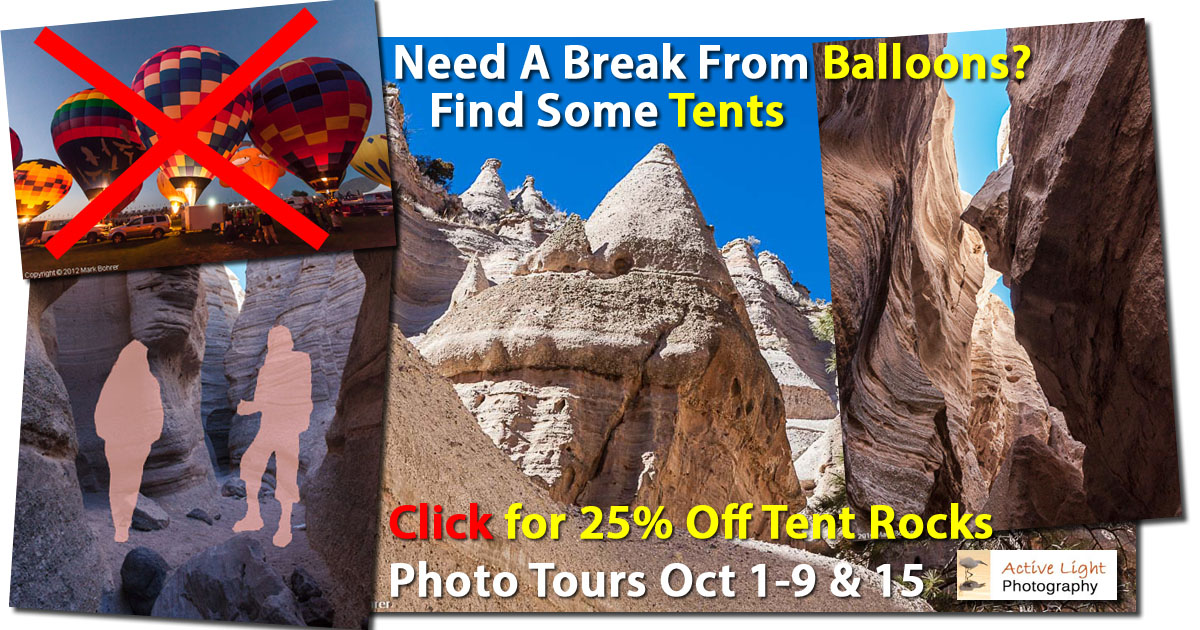 Morning Prep It starts with a visual inspection. Pilots don’t want holes or tears in hot-air envelopes or baskets, and Zebra launch directors have to approve every balloon’s airworthiness before clearance for takeoff from a clear launch area.  Cold Inflation, Albuquerque International Balloon Fiesta Then cold inflation starts. Fans that look like Hollywood wind machines begin the process of filling the balloon. When the pilot judges it’s full enough, he’ll signal his crew to fire the burner and heat that air, making the balloon stand up from the ground. On a radio signal, all 700 or so balloons will fire their burners together for the morning glowdeo. Then if Zebras approve launches, you’ll see all those balloons rise within minutes of each other in a mass ascension. 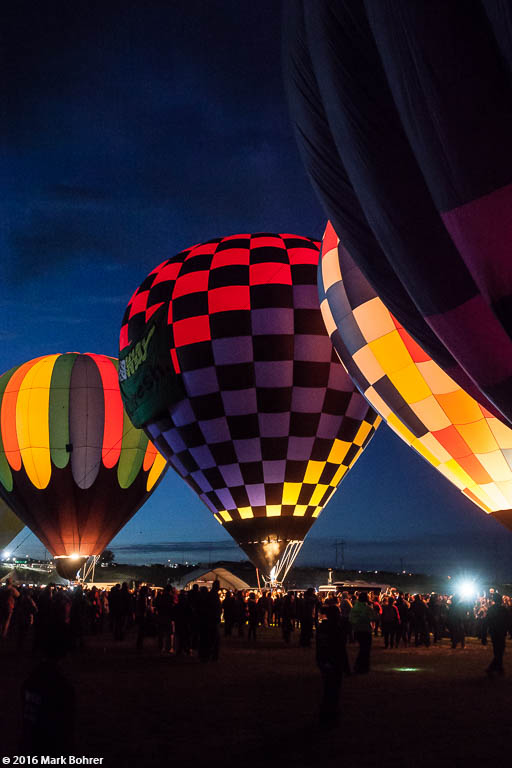 Standing up for the morning Glowdeo Albuquerque International Balloon Fiesta Special Shapes On two days, these special balloons will be featured in the Special Shapes Rodeo. You’ll get to see giant bumblebees, a spaceman, a little firefighter, and maybe Elvis leaving the building. Heck, there may even be a SpiderPig. 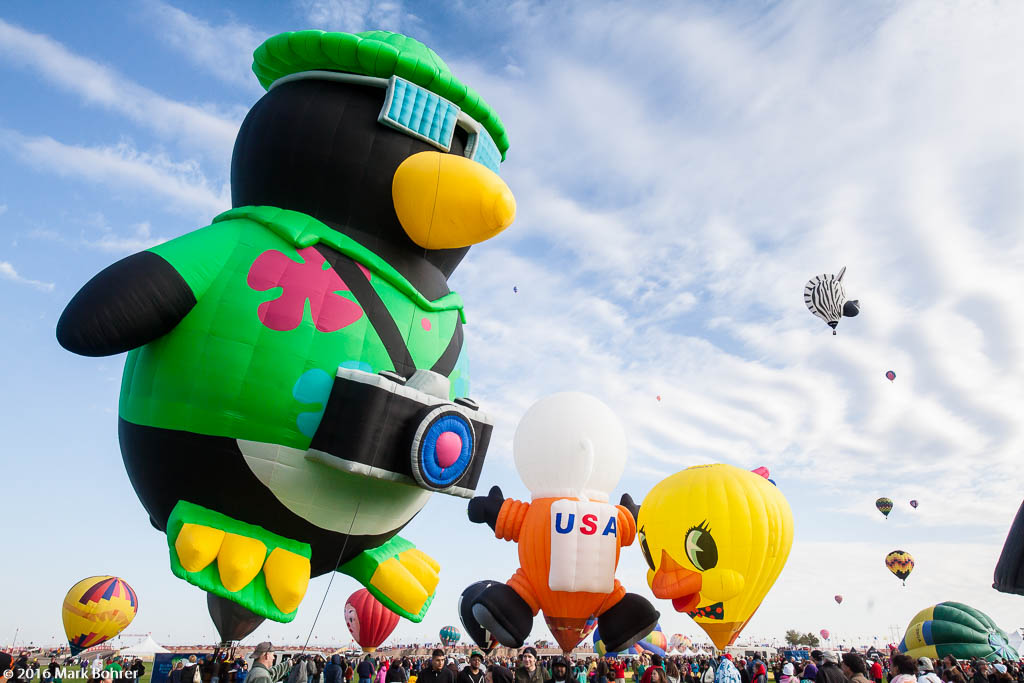 Traveling Snowbird and pals Albuquerque International Balloon Fiesta Evening Glowdeo And Other Events You’ll also see pilots start the burn for the evening glowdeo. In between, there’s a chainsaw sculpture carving contest, live music, balloon competition flying, and even a gas balloon distance race. Early and late, you’ll also see a laser light show. Hidden Options For No-Fly Times What do you do if the weather or wind don’t cooperate – or you want a balloon break? There are many outstanding outdoor activities in and around Albuquerque. On mornings when balloons aren’t flying, I make my way to Petroglyph National Monument. This drive-in National Monument on Albuquerque’s west side harbors over 20,000 petroglyphs (rock carvings) along miles of mostly easy trails. 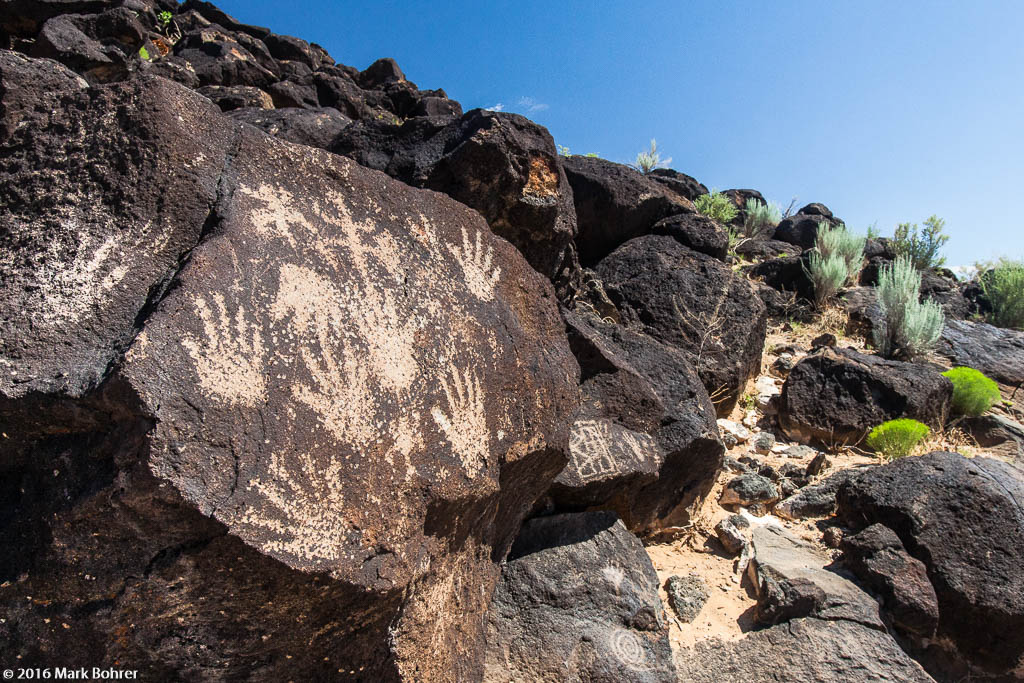 Hands, Petroglyph National Monument There’s also the Sandia Peak Tramway, a great way to see the city and the western landscape spread out at your feet. You’ll need to call to be sure it’s running if it’s windy. There are ‘flights’ every 45 minutes or so, winds permitting. The Indian Pueblo Cultural Center has examples of black-on-black and other distinctive Southwestern pottery styles, Zuni fetishes (properly Zuni rock sculptures, since they aren’t blessed), and historical displays honoring New Mexico’s 19 Pueblos. You can also buy Zuni sculptures and Pueblo pottery in the gift center. Further afield, you can explore the volcanic tuff, sandstone ‘tents’ and stunning slot canyon shapes and textures at Kasha-Katuwe Tent Rocks National Monument. This former seabed disappeared under hardening ash and ejected rocks from the Jemez Volcanic Field. Then water and wind wore away softer rock and ash, leaving a sculpted landscape of conic rocks and slots. It’s just an hour away from Albuquerque, bordering Cochiti Pueblo. 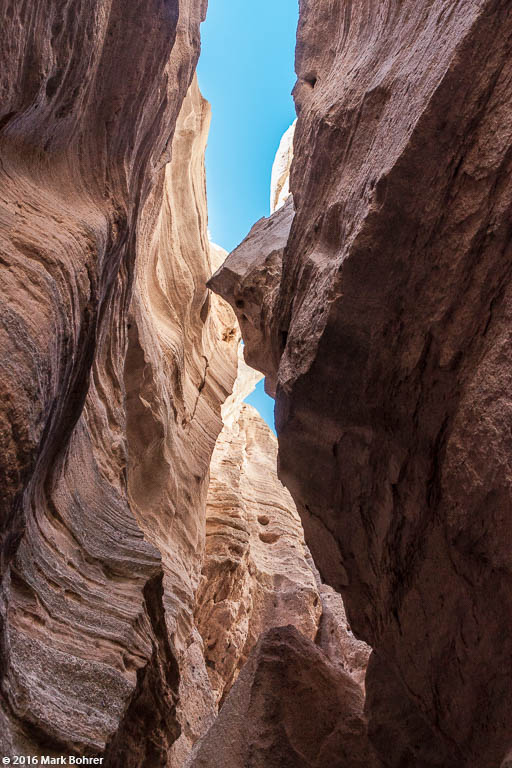 Slot canyon textures, Kasha-Katuwe Tent Rocks National Monument Bandelier National Monument is another option, about two hours north of town. Here Ancestral Puebloans hollowed out dwellings in the cliffs of hardened ash (tuff) and farmed the mesatops. Regular water came from Frijoles Creek in the canyon below the dwellings. In a common story across the Southwest, 400 years of hard land use and a drought motivated a Puebloan move to pueblos along the Rio Grande.  D-shaped ruin, Bandelier National Monument Just west of Santa Fe are hundreds of petroglyphs in undervisited La Cieneguilla Petroglyph Site. ‘Glyphs here date from 1200-1600, and their relative inaccessibility keeps them in good shape. The site is about an hour north of Albuquerque. 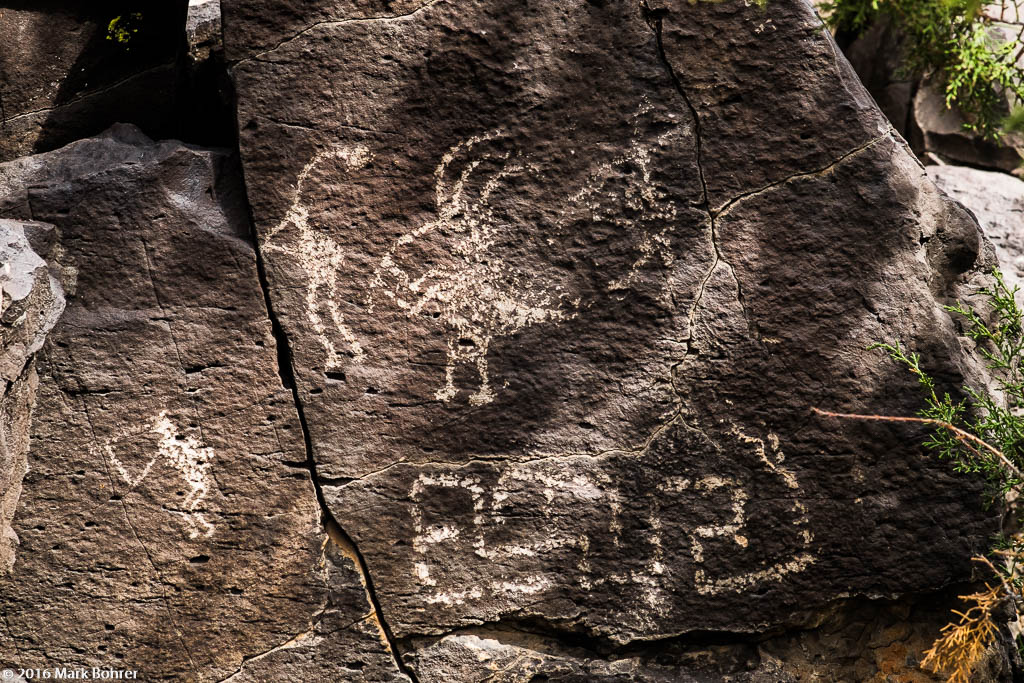 Kokopellis, La Cieneguilla Petroglyph Site Then there’s Chaco, about 3 hours northwest of Albuquerque off US 550. Chaco Culture National Historical Park preserves 13 multi-story Great Houses, built without tools, wheels or horses, mostly between 750 – 1100 CE. Although well-preserved, these are clearly ruins. Because of its remoteness – the last 13 miles to the north entrance are a sometimes-rough dirt road – Chaco sees fewer than 45,000 annual visitors. Unlike heavily-visited Mesa Verde, you can walk into Chaco’s ruins and explore backcountry trails on bordering mesas on your own, without ranger supervision. 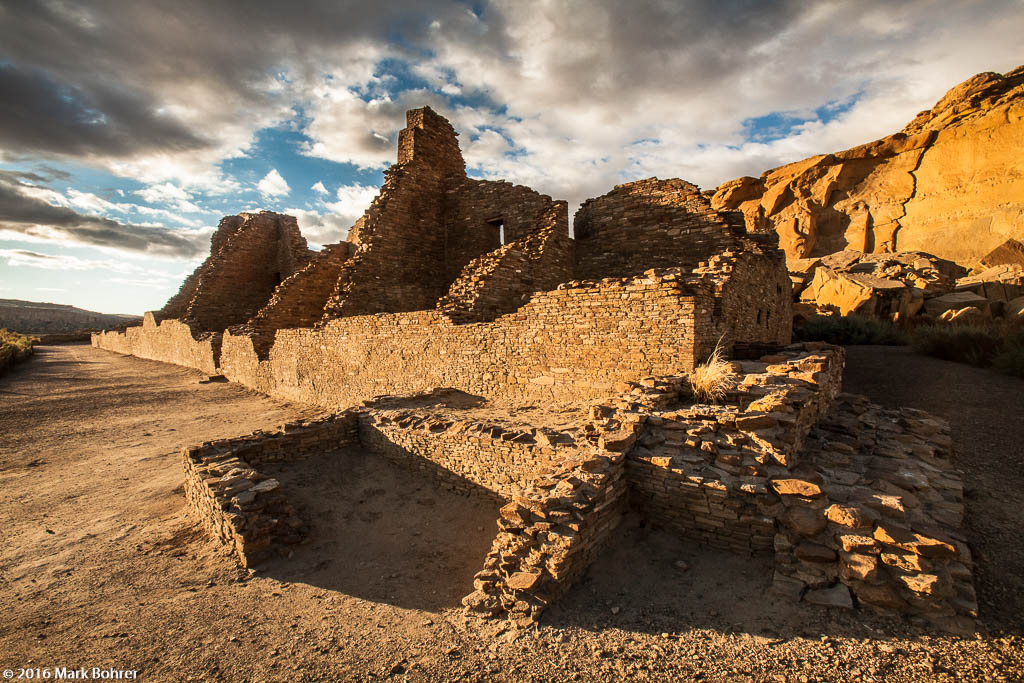 Pueblo Bonito, Chaco Canyon The only catch to all this freedom is Chaco’s sunset close. I’ve been chased out by rangers as I finished shooting the evening moonrise through one of Kin Kletso’s windows. They were doing their jobs in an isolated, backcountry area, so I couldn’t fault them. One partial way around this is to camp at Gallo Campground. You can’t enter ruins after closing time, but the view east of Fajada Butte can be stunning. And you’ll be ready for the best light when ruins open at 7 am. 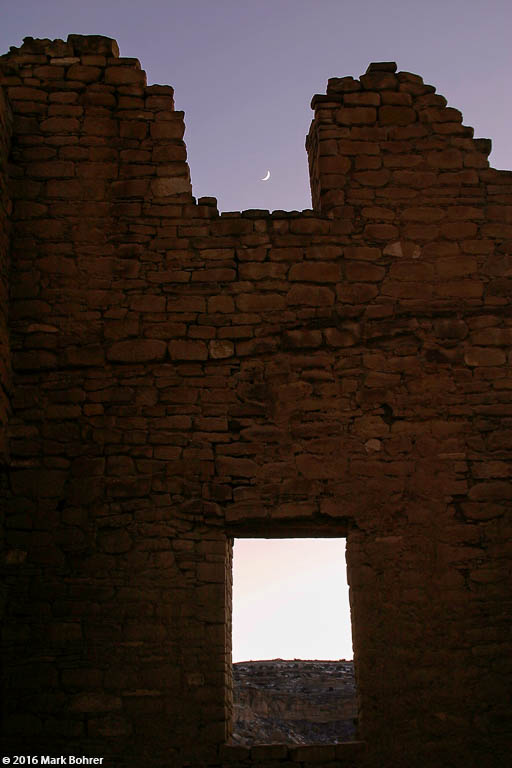 Moonrise, Kin Kletso, Chaco Canyon If you’d prefer a living pueblo with freestanding adobe buildings, Taos Pueblo is about 2 1/2 hours north. During open hours, you can walk the grounds and explore some residents’ homes and shops in this 1,000-year-old pueblo. It’s a gorgeous setting, just north of Taos’ quirky shops and excellent restaurants. 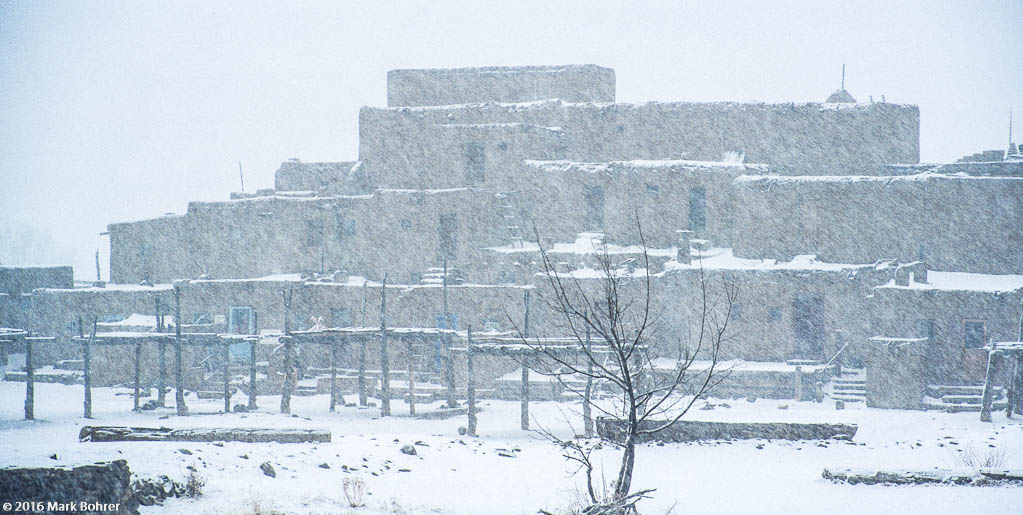 Taos Pueblo, New Mexico If you must, you can also visit Santa Fe. The plaza is worth a look, along with Saint Francis Cathedral directly east of it. Food at restaurants is good and galleries engaging at this number two or three art market in the U.S. (depending on who you ask), but expect to pay a premium during Balloon Fiesta. Foodwise, you can do much better for the money in Taos or at one of Albuquerque’s 1500 or so restaurants. Albuquerque Restaurants During our first fiesta, we enjoyed dinner at Rudy’s Country Store and BBQ. I also like the mix of traditional Pueblo and New Mexican cuisine at the Pueblo Harvest Cafe in the Indian Pueblo Cultural Center. M’Tucci’s Italian is a bit farther away, but great Italian fusion and a huge brew list make it well worth the drive. Then there’s local favorite The Range, serving their unusual take on New Mexican cuisine at three locations around Albuquerque. I first ate there when my realtor took me for a lunchbreak. I figured if a local realtor liked it, it must be good – and it was! 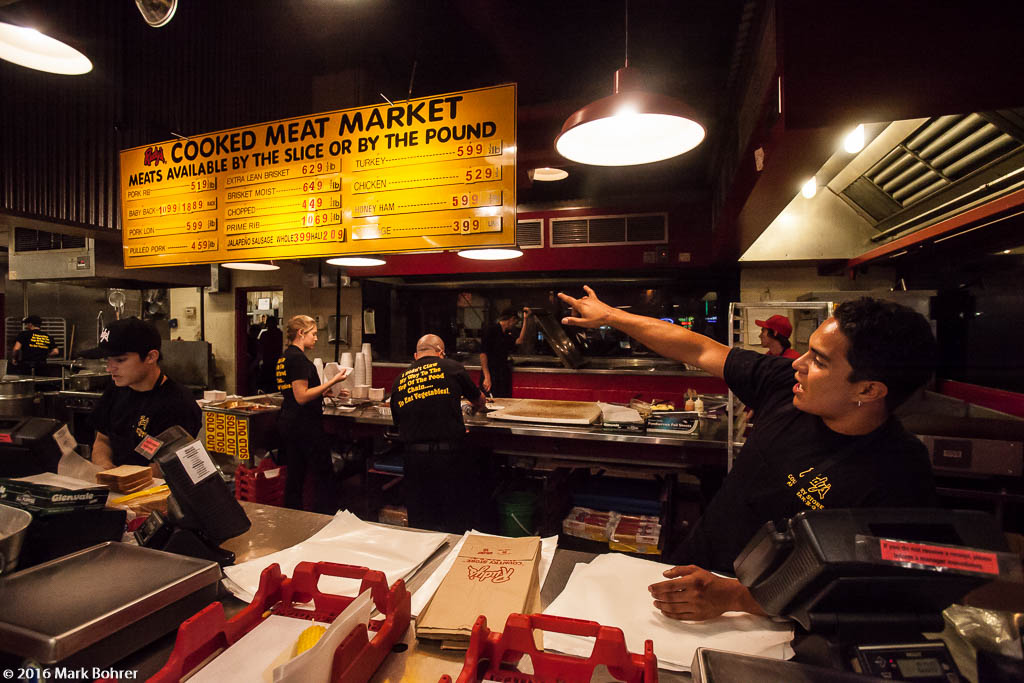 Rudy’s Country Store and BBQ, Albuquerque Shot Notes – How To Shoot Balloons Shooting a balloon fiesta can be similar to what you’d do for an airshow. I try to tell the story of a typical day. Gear-wise, you’ll want an ultra-wide lens (16mm full-frame) for close-ups of crew and balloons during inflation. Flight shots will require a full-frame 200mm, as will pictures of the live entertainment. I use a 24-70mm zoom on a second camera for grab shots of sudden action. You’ll need a camera with low noise at high ISO for morning and evening glowdeos, usable to at least ISO 6400. I like my older EOS 5D mk II for wide shooting and EOS 7D for telephoto zooms. Today’s mirrorless cameras provide a lighter-weight alternative to a dSLR. I use a Fuji X-E2 with a bunch of Leica M-mount lenses on a Fuji adapter, or an older Canon FD 100-300mm f/5.6L on a Kipon FD-FX adapter. I’ve also used flash to fill and stop low-light action. You’ll get blur in distant moving people and objects while ‘freezing’ closer motion lit by the flash, using slower shutter speeds for proper exposure. This used to be known as dragging the shutter. I’ve used a tripod for some shots at Fiesta, but the crowds usually make it less than ideal. It’s still possible to maneuver around people, but your best bet with a tripod may be a morning glowdeo and mass ascension about midweek, when there are fewer visitors. More Information Cold inflation description, Shasta Valley Balloons, accessed at http://www.hot-airballoons.com/sure-id-love-to-help/ Albuquerque International Balloon Fiesta official site, accessed from http://www.balloonfiesta.com/ Balloon Fiesta Facts and Figures, accessed from http://albuquerque.about.com/od/albuquerqueeventcalendars/a/Balloon-Fiesta-Facts-And-Figures.htm Balloon Fiesta Daily Event Schedule, accessed from http://www.balloonfiesta.com/event-info/event-schedule |
(408) 483-3782
Curious about how to shoot ruins?(408) 483-3782

Recent Comments